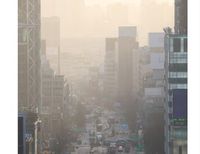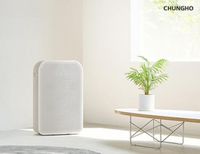As spring takes hold in South Korea, residents are confronted with a dual threat: seasonal allergies exacerbated by yellow dust and fine particulate matter, which can severely impact eye health. Health experts are stressing the importance of awareness and precaution as the dry spring air brings with it not just flowers but also a host of allergens, including pollen and dust, heightening eye discomfort symptoms.
According to recent reports from the Korea Disease Control and Prevention Agency and Seoul's environmental agency dated March 19, 2025, March holds the record for the highest average concentration of ultrafine dust and the greatest number of 'bad' air quality days. This year, around 80% of days exceeding the high concentration threshold of 50㎍/㎥ occurred in December through March, coinciding with an increase in outdoor activities as students return to school.
Among the prevalent eye conditions during this time, allergic conjunctivitis stands out. The irritation caused by airborne allergens like pollen, dust, and even pet dander can lead to symptoms such as redness, itching, burning sensations, excessive tearing, and increased sensitivity to light. The Health Insurance Review & Assessment Service reported that a staggering 1,992,252 patients sought treatment for allergic conjunctivitis in 2023, reflecting an alarming trend as incidence rates rose significantly from 140,783 cases in January to 210,920 in March, peaking at 350,535 cases in April.
Awareness around preventive measures is critical, especially since allergens like pollen and dust are nearly impossible to eliminate entirely. Experts recommend staying indoors during high pollen or dust days, drinking adequate fluids, and wearing sunglasses and wide-brimmed hats when going outside. After outdoor activities, it's crucial to wash hands and face thoroughly to remove allergens. Additionally, using artificial tears can help keep eyes moist and soothe irritation.
Kim Eun-cheol, a professor of ophthalmology at Katmandu Bucheon St. Mary's Hospital, emphasizes that if symptoms persist or worsen, patients should seek medical treatment. “If symptoms are severe, medications such as antihistamines or mast cell stabilizers may be prescribed, and in more critical cases, steroids may be necessary under the guidance of a healthcare professional due to potential side effects,” he advised.
Springtime also sees a rise in cases of seasonal allergic conjunctivitis, which often occurs with other allergic conditions like asthma and eczema, particularly in younger individuals under 10. It's noted that about two-thirds of patients exhibiting symptoms have a family history of such allergies. Symptoms can include severe itching, redness, and the characteristic appearance of giant papillae on the inner eyelids.
Another concern is epidemic keratoconjunctivitis, typically caused by viral infections akin to the common cold. Although more prevalent during the summer months, it can also be aggravated by yellow dust and fine particulate crises. Symptoms often include tearing, excessive discomfort, and redness, and it can often be mistaken for allergic conjunctivitis early on.
The presence of microplastics within yellow dust poses yet another layer of health risk. According to research, particles of varying sizes, 10 to 1000 micrometers in diameter, can be carried into the atmosphere from desert regions of China, exacerbated by climate change, resulting in earlier and more frequent occurrences of yellow dust. Not only does this dust threaten respiratory health, but the microplastics within it raise growing health concerns.
On March 13, 2025, the Ministry of Environment lifted the yellow dust warning for several provinces, including Sejong and Incheon, as fine dust levels dropped to safer thresholds. However, the occurrence of harmful dust contained in microplastics is part of a broader environmental challenge, one echoed by studies predicting that microplastics can enter not only our atmosphere but also find their way into our bodies.
Spring is particularly dangerous as many families seek to balance necessary indoor ventilation with the influx of fine dust pollutants. Kim Ki-hyun, a professor in the Department of Construction and Environmental Engineering, recommends maintaining good indoor air quality as a critical priority. He states, “Regular ventilation is essential, but during high pollen or dust days, this can become challenging. Advanced air purifiers with HEPA filters and other technologies are recommended to effectively reduce indoor pollutants.”
As the number of yellow dust and allergen-laden days increases, consumer interest in air purifiers has surged, with products boasting advanced filtration and smart technology becoming increasingly popular. Cheongho Nice's air purifier, 'Dio,' for example, utilizes smart AI mode to continuously monitor air quality and adjust settings automatically.
With a multi-stage filtration system designed to capture a range of indoor pollutants including ultrafine dust, formaldehyde, and other harmful gases, maintaining a breathable indoor environment becomes feasible even during high-exposure periods. As spring arrives, the proactive management of indoor air quality and eye health becomes paramount for those affected by seasonal allergies.
While policies and advancements in technology offer promising solutions, continued awareness and adaptation are essential for everyone navigating the complex environmental challenges posed by spring health risks. Individuals are encouraged to consult healthcare professionals when symptoms are noticeable and to take preventive measures seriously in order to protect their health.




